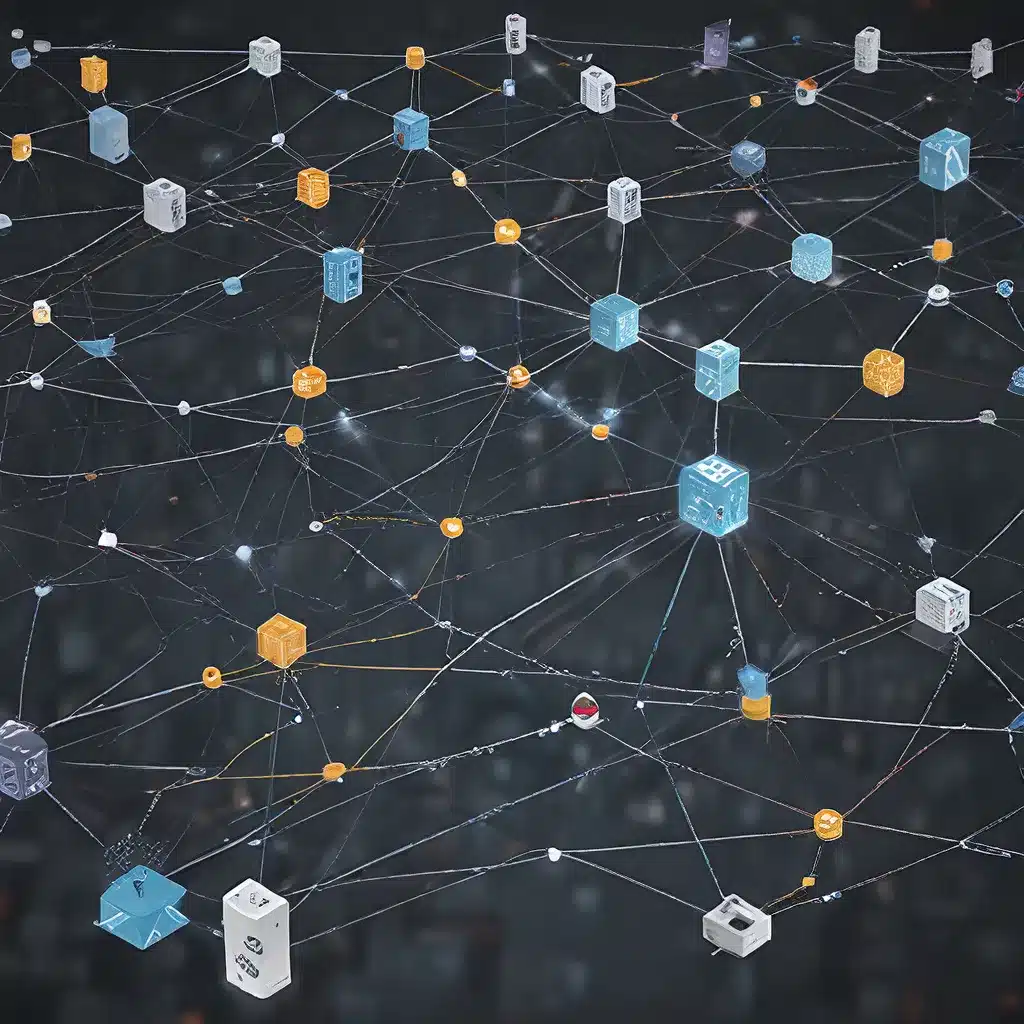
As the world becomes increasingly connected through the Internet of Things (IoT), the demand for sensor networks to monitor and manage a wide range of applications has grown exponentially. From precision agriculture and smart cities to industrial automation and environmental monitoring, IoT-enabled sensor technologies are revolutionizing the way we collect, analyze, and utilize data. However, the scalability and reliability of these sensor networks pose significant challenges, particularly when it comes to adaptive sensor calibration and energy management.
The Rise of Sensor Networks in IoT
The rapid advancement of IoT has led to the proliferation of sensor-based technologies across various industries. These distributed sensor networks are capable of gathering vast amounts of real-time data on environmental conditions, asset performance, and human activity. By leveraging this data, organizations can make more informed decisions, optimize operations, and drive innovation.
One of the key applications of sensor networks in IoT is precision agriculture. Farmers and researchers are using a network of sensors to monitor crop growth, soil moisture, and microclimate conditions in real-time. This data can be used to optimize irrigation, detect pest infestations, and forecast yields, enabling more sustainable and efficient agricultural practices.
Similarly, smart cities are leveraging sensor networks to monitor and manage traffic flow, air quality, and waste management. By collecting and analyzing data from a distributed network of sensors, city planners can make data-driven decisions to improve urban infrastructure and enhance the quality of life for residents.
Challenges in Sensor Network Design and Management
As the scale and complexity of IoT sensor networks continue to grow, adaptive sensor calibration and energy management have emerged as critical challenges that must be addressed.
Adaptive Sensor Calibration: Sensor networks deployed in diverse environments can be subject to various environmental factors, such as temperature, humidity, and interference, which can affect the accuracy and reliability of sensor readings over time. Traditional calibration methods that rely on manual intervention or centralized control are often inadequate in large-scale, distributed sensor networks. Developing adaptive calibration algorithms that can automatically adjust sensor parameters based on changing conditions is crucial to ensure the integrity of sensor data and the overall performance of the system.
Energy Management: IoT sensor nodes are often battery-powered or have limited energy resources, making energy efficiency a critical concern. Factors such as sensor sampling frequency, data processing, and communication protocols can significantly impact the energy consumption of these nodes. Implementing distributed algorithms for dynamic power management and energy-efficient data transmission is essential to extend the lifetime of sensor networks and reduce the maintenance overhead.
Distributed Algorithms for Adaptive Sensor Calibration
To address the challenges of adaptive sensor calibration and energy management in scalable IoT sensor networks, researchers have developed a range of distributed algorithms and techniques.
Distributed Sensor Calibration
One approach to adaptive sensor calibration is the use of distributed algorithms that leverage peer-to-peer communication and in-network processing to calibrate sensors autonomously. These algorithms enable individual sensor nodes to exchange calibration information with their neighboring nodes, allowing them to self-adjust their parameters based on local conditions and collective sensor readings.
For example, the CropSight system, a scalable and open-source IoT-based information management system for plant phenotyping and crop management, utilizes a two-component architecture to facilitate automatic data calibration and synchronization across distributed sensor nodes. The device-side component of CropSight is responsible for data standardization and collection, while the server-side component manages data aggregation and visualization. This distributed design enables real-time monitoring and adaptive calibration of environmental sensors deployed in field experiments and greenhouse settings.
Energy-Efficient Data Management
To address the energy management challenge, researchers have developed distributed algorithms for dynamic power control and energy-efficient data transmission in sensor networks.
One such approach is the use of duty-cycling algorithms, which dynamically adjust the sampling rate and communication frequency of sensor nodes based on current energy levels and network conditions. By optimizing the duty cycle of sensor nodes, these algorithms can reduce energy consumption without significantly compromising data quality or application performance**.
Additionally, in-network data aggregation and compression techniques have been explored to minimize the amount of data that needs to be transmitted, thus reducing the energy consumed by wireless communication. These distributed data processing algorithms can pre-process and summarize sensor data within the network, transmitting only the most relevant and condensed information to the central server.
Securing Sensor Networks in IoT
As sensor networks become increasingly critical to IoT applications, security has emerged as a pressing concern. Distributed sensor nodes can be vulnerable to a variety of attacks, including eavesdropping, data tampering, and unauthorized access. Developing secure communication protocols and authentication mechanisms for sensor networks is essential to protect the integrity of sensor data and ensure the overall resilience of IoT systems.
Researchers have explored distributed security algorithms that leverage cryptographic techniques and trust-based models to secure sensor network communications. These algorithms can establish secure peer-to-peer connections, authenticate sensor nodes, and detect and mitigate security threats in a decentralized manner, reducing the reliance on a single point of failure.
The Future of Sensor Networks in IoT
As the demand for IoT-enabled services continues to grow, the role of sensor networks will become increasingly crucial. Advances in distributed algorithms for adaptive sensor calibration, energy-efficient data management, and secure communications will be essential to the scalability and reliability of sensor-based IoT systems.
By leveraging distributed intelligence and edge computing, sensor networks can become more autonomous, adaptive, and resilient, enabling a new generation of IoT applications that optimize resource utilization, enhance sustainability, and improve the quality of life for individuals and communities.
Sensor Networks is at the forefront of these developments, providing a comprehensive platform for researchers, engineers, and industry practitioners to explore the latest advancements in sensor network technologies and their real-world applications.